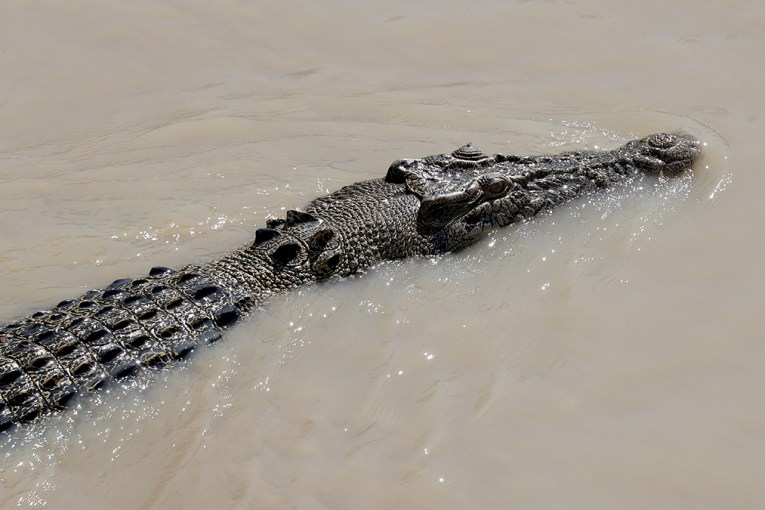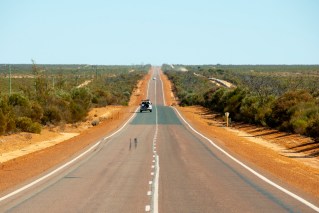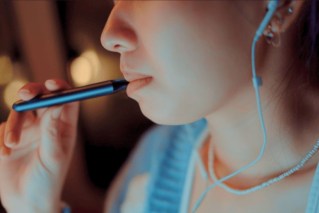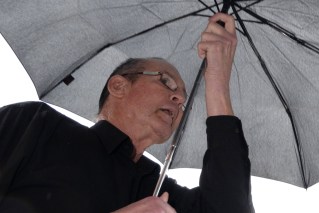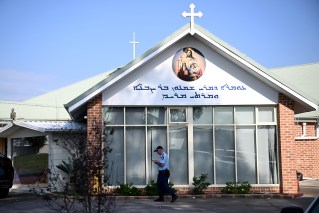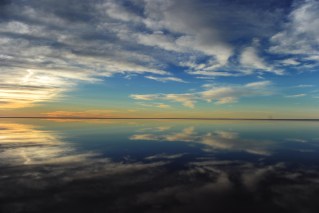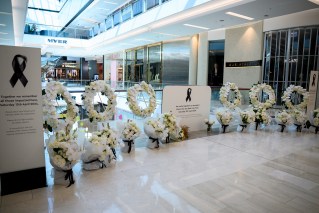A Tongan man who says he was in the water for around 27 hours after being swept out to sea during Saturday’s devastating tsunami has been hailed a ‘real life Aquaman’.
The eruption of the Hunga Tonga-Hunga Ha’apai volcano on Saturday killed at least three people, sent tsunami waves rolling across the archipelago, damaging villages, resorts and many buildings and knocked out communications for the nation of about 105,000 people.
Lisala Folau, who lived on the small, isolated island of Atata which has a population of about 60 people, was swept out to sea when the waves hit land at about 7pm local time on Saturday, he said in a radio interview to Tongan media agency Broadcom Broadcasting.
Mr Folau said he was painting his home when he was alerted about the tsunami by his brother, and soon the waves had gone through his lounge.
He climbed on a tree to escape but when he got down another big wave swept him away, he said. The 57-year-old said he is disabled and cannot walk properly.

Lisala Folou claims he was at sea for 27 hours.
“I just floated, bashed around by the big waves that kept coming,” he told the radio station.
Mr Folau said he kept floating, and slowly managed to swim 7.5km to the main island of Tongatapu, reaching the shore 27 hours later at about 10pm on Sunday.
Reuters was unable to contact Mr Folau or verify the events.
The story of Mr Folau’s heroics went viral among Tongan groups on Facebook and other social media.
“Real life Aquaman,” said one post on Facebook, referring to the comic book and film character.
“He’s a legend,” said another post.
Atata, which is about 8km northwest of Tonga’s capital Nuku’alofa, or a 30-minute boat ride, has been almost entirely destroyed in the tsunami that hit the islands.
Tongan naval boats are still surveying the smaller islands and evacuating people to the main islands.
Meanwhile Tonga King Tupou VI has used a radio address to urge courage and hard work for the rebuilding process after a volcanic eruption and tsunami hit the country.
Foreign aid arrives

Air Force Load Master Corporal Dale Hall inspects humanitarian aid supplies aboard a Royal Australian Air Force C-17A Globemaster III. Photo: Getty
The first aid flights have reached Tonga with more en route, five days after a devastating volcanic eruption and tsunami, as communities awaited a ship with equipment to scale up supplies of much-needed drinking water.
An Australian Globemaster C-17A military transporter landed, carrying desalination equipment, shelter and kitchens, Australian Defence Minister Peter Dutton said.
He praised the “tireless efforts of Tongan authorities” to clear away ash deposited by the Hunga Tonga-Hunga Ha’apai volcano.
A Royal New Zealand Air Force C-130 Hercules carrying disaster relief supplies also arrived at the South Pacific country’s Fua’amotu International Airport, a defence spokesperson said after volcanic ash was cleared off the runway.
Ash has blanketed the archipelago and spoiled much of its drinking water.
Rachael Moore, Australia’s high commissioner to Tonga, said the loss of property had been “catastrophic”, that parts of the shoreline resembled a “moonscape” and that drinking water was “an extremely high priority”.
One New Zealand navy ship arrived on Thursday and a second, carrying 250,000 litres of water and desalination equipment able to produce 70,000 litres a day, was due on Friday, its High Commission said.
Speaking to Reuters from the capital Nuku’alofa, journalist Marian Kupu said Tongans were cleaning up all the dust from the volcanic eruption but feared they may run out of drinking water.
“Each home has their own tanks of water supply but most of them are filled with dust so it’s not safe,” Kupu said.
Telephone links between Tonga and the outside world were reconnected late on Wednesday although restoring full internet services is likely to take a month or more, according to the owner of the archipelago’s sole sub-sea communications cable.
Tongans abroad were frantically calling families back home to ensure they were safe.
“It was very relieving to hear from them,” said Fatafehi Fakafanua, the Speaker of Tonga’s legislative assembly, who was in New Zealand when the disaster struck, after making contact with his family.
The government had advised them to drink bottled water and wear masks outside because of the ash.
“There’s a fine layer of, a blanket of ash, everywhere and I hear that the public are generally out on the streets trying to clean it up,” Mr Fakafanua added.
“So there’s a real communal effort…It’s going to be a long, long, long road to recovery.”

An aerial view of heavy ash fall on Nomuka. Photo: Getty
The king also received a message of condolence on Thursday from a fellow monarch, Queen Elizabeth, who said she was “shocked and saddened” by the devastation.
“It must be incredibly difficult for those who are unable to contact friends and family while communications are disrupted, and I hope that they will soon be restored,” the Queen said.
The United Nations said about 84,000 people – more than 80 per cent of the population – has been badly affected by the disaster with safe water “the biggest life-saving issue”.
The volcano erupted about 65km from the Tongan capital with a blast heard 2300km away in New Zealand.
Waves reaching up to 15 metres hit the outer Ha’apai island group, destroying all houses on the island of Mango as well as the west coast of Tonga’s main island Tongatapu, where 56 houses were destroyed or seriously damaged.
